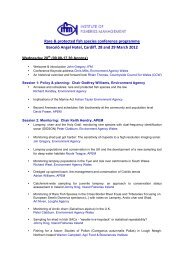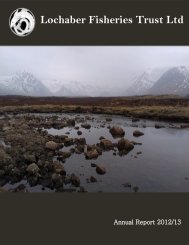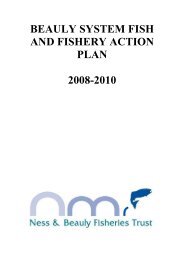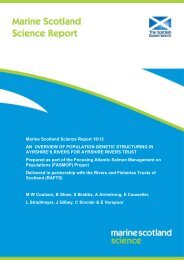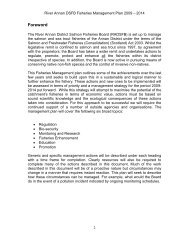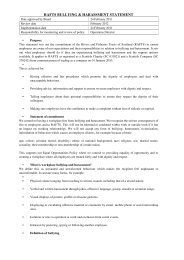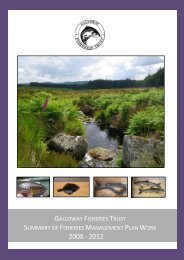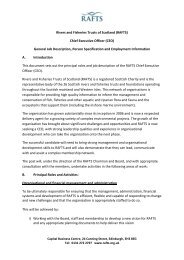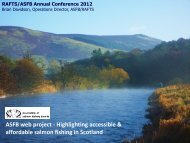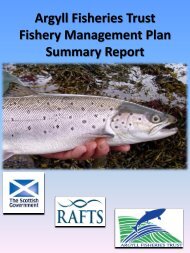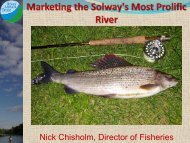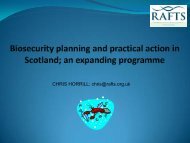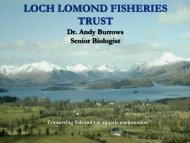You also want an ePaper? Increase the reach of your titles
YUMPU automatically turns print PDFs into web optimized ePapers that Google loves.
instream habitat types suitable for different ages of fish and features of significance aboutthe surrounding riparian zone, for example the condition of the banks, presence ofpollution sources and obstructions to migration.At a survey rate of 8km per day it is estimated that one surveyor will require 7 months tocomplete the survey, with additional time to write up the data and in the event of weatherdelays. However, if the Board’s staff could also be used to carry out the survey thecatchment could be covered more efficiently and, with two teams of two surveyors ableto cover around 16 km a day each, the time for completion of the field work would bereduced to 2 months, suggested to be May and June. Within the team of two thesurveyors cover the river in a leapfrog manner surveying alternate stretches and movingthe vehicle forward to a prearranged site each time a stretch is completed, thereby,whenever road access allows, avoiding the need to double back at the end of the day toreturn to the vehicle.In addition to covering the ground most efficiently, this team coverage can also be usedto record suitable locations for the later electric fishing survey and record informationpertinent to the Health and Safety risk assessment such as mobile phone reception.Completing the survey within one season allows the current situation across thecatchment to be assessed and ensures areas are prioritised correctly. It has the advantagethat plant species can be considered, including invasive species such as Ranunculus,Giant Hogweed and Japanese Knotweed which the <strong>Don</strong> DSFB is developing a controlprogramme for, and assessed in the same growing season. Although Board staff will berequired they will remain a visible presence on the river and can concentrate on surveyingthe mainstem in June when plant species should be growing.If all of the Board staff are not available then use can be made of the seasonal staff that itwill be necessary to employ to help with electric fishing surveys plus one bailiff on arotational basis, leaving two bailiffs for protection duties. Whilst efficient and feasiblethis will result in skills and knowledge leaving the area when the two seasonal staffdepart at the end of their contract. The employment would be likely to cover June andJuly for the habitat survey and August and September for electric fishing.In the event that the habitat survey can not be completed in a single year the catchmentelectric fishing survey should be postponed until it is and electric fishing carried out inthe first year should be restricted to the collection of some of the genetic samples and ifpossible the obstruction impact assessments.The data produced will be analysed by the Biologist and can be incorporated into aGeographical Information System (GIS) to aid interpretation with other data sourcesacross the catchment.Data gathered as part of the <strong>Don</strong> Board’s earlier habitat survey to locate areas forimprovement in the upper catchment can be compared with current data to determine ifareas have deteriorated.18



